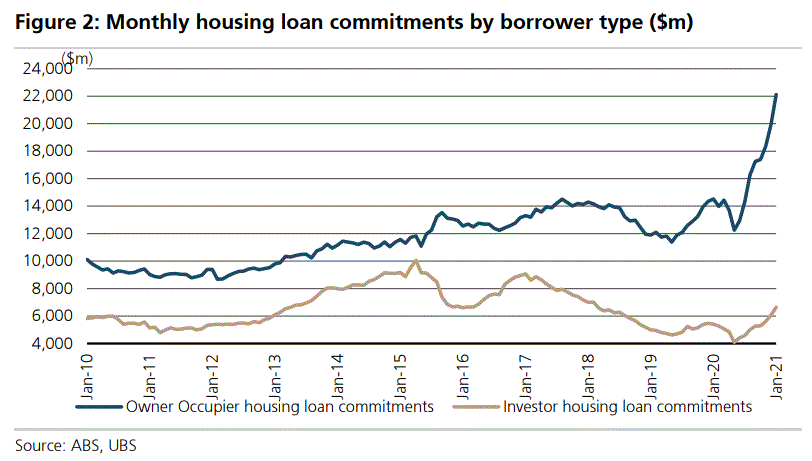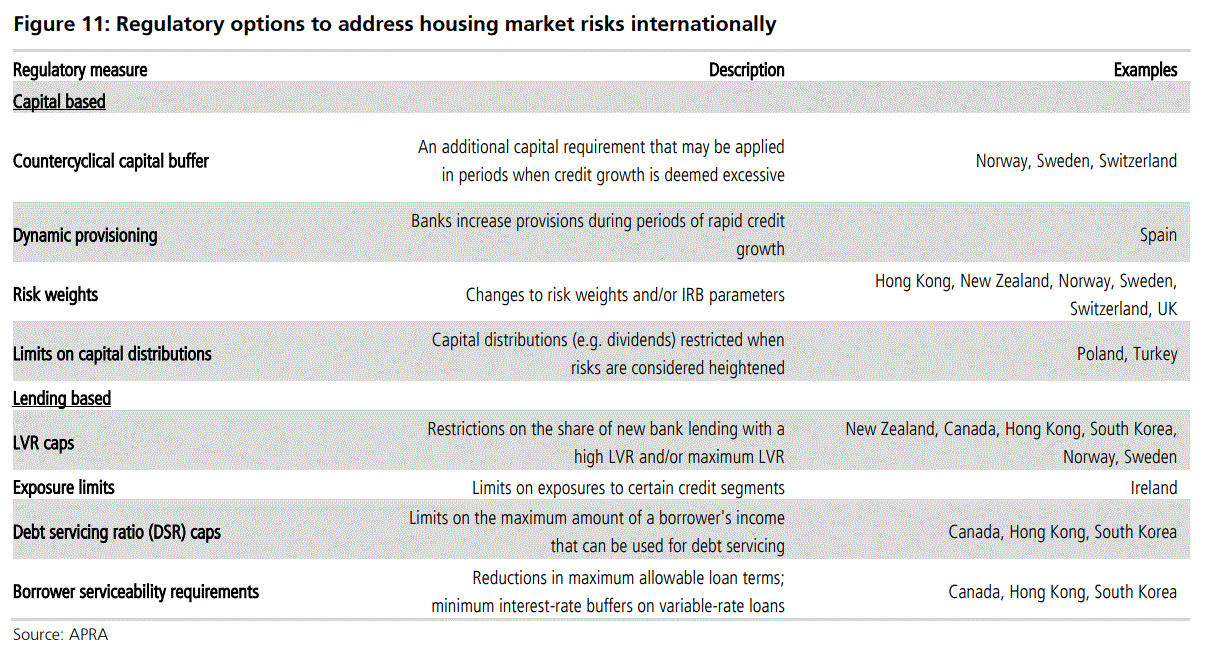Via UBS:

Housing ‘up-crash’ puts pressure for renewed Macroprudential policies
The Australian economy is rebounding very strongly, with data exceeding expectations. With the RBA still maximum dovish, all-time low interest rates and banks willing-andable to lend, Australia is experiencing a housing ‘up-crash’. Interestingly, the Council of
Financial Regulators (CFR) is watching housing and “will continue to closely monitor\ developments” but recently added “and consider possible responses should lending standards deteriorate and financial risks increase”. We believe Macroprudential policies
are likely later this year if housing continues to boom, instead of rate hikes.
What Macroprudential policies are likely?
For several years APRA has focused on improving lending standards at individual banks to reduce the share of high risk lending across the system. This continues to be the case. However, at times it has used “tactical, temporary constraints” to reduce system risks. Given the current environment in the housing market and rising systemic risks we believe new tactical measures are likely to be needed. We believe the CFR may consider: (1) Caps on investment property credit growth (was 10% y/y in 2014). However, it’s currently at zero, so it may need to spike to be considered; (2) Caps on Interest-Only lending (was 30% share in 2017). However, with IO at just 19% of lending flow now, new caps are unlikely; (3) LVR limits (similar to RBNZ). This may be considered but policies may need to exclude First Home Buyers or could be applied only to Investors; (4) Limits on lending to borrowers with very high Debt-to-Income ratios (eg DTI > 6x). This policy was favoured by APRA a few years ago and may be effective in preventing over-borrowing. First Home Buyers may be excluded. We see a medium/high chance of DTI caps; (5) Increasing mortgage interest rate serviceability floors. In May 2019, interest rate buffers were reduced to 2.5% and banks allowed to calculate their own floors. Mortgage serviceability floors have fallen to just 5.05% at some banks (from ~7.25% until mid-2019). Given rates are at the zero lower bound and the market is pricing in a series of rate rises, we believe moving the mortgage serviceability floors up to ~6% may be seen as prudent. We see this as medium/high probability.
We see Macroprudential policies as prudent, not a headwind for the banks
We expect housing credit growth of 5-6% in CY21, but credit growth could exceed these levels if the housing ‘up-crash’ continues. We view macroprudential tools as positive, helping to prevent housing from over-heating and the RBA potentially being caught behind-the-curve. Remain overweight banks. Pref: WBC, ANZ, NAB, CBA.


